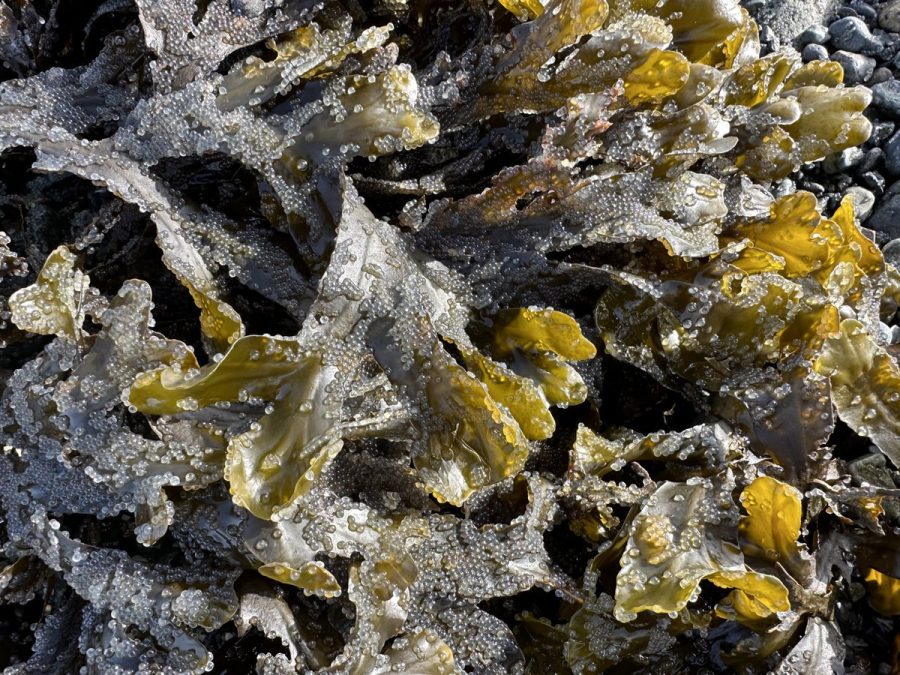Plastic Makes Way for Seaweed’s Uprising
Recently, seaweed has risen in global popularity from a long-used ingredient in food to a replacement for plastic. Many companies are looking into how replacements made from seaweed can be used for various plastic items. Seaweed alternatives are more environmentally friendly and better for climate change. But while some may believe seaweed as a new miracle crop, the availability of this resource and the effect of climate change on its growth need to be taken into consideration when elevating it into this position.
Pierre Paslier and Rodrigo García González’s company, Notpla, has been introucting new uses seaweed as a substitute for plastic. Some of their products include edible packets made of seaweed and plant extracts which can be used to package water, ketchup and cosmetics and they are also working on “seaweed-based coating for takeout cardboard boxes.” The startup company Sway, “makes seaweed-based, home-compostable replacements for plastic packaging.” While Sway’s seaweed coating is a more expensive alternative to regular plastic coating, its products have a shelf life of a year, material that disappears in 4-6 weeks and holds “up to 20 times more carbon per acre than trees.” Every year, “180 billion plastic bags (polybags) are produced” and “less than 15% of polybags in circulation are collected for recycling.” While the products from these companies are still new, they offer creative environmentally friendly benefits which regular plastic products do not and also do a good job of fitting into consumer fields where plastic is primarily used. Using more of these products can be a small way to reduce the effects of climate change and global warming.
Seaweed production has also expanded its borders outside of Asia where South Korea was the primary country for this product. For example, in Australia, multiple companies are competing for seaweed production. A company called CH4 Global is growing asparagopsis, a seaweed native to Australia, in glass tanks. According to various studies, “A sprinkle of asparagopsis in cattle feed can cut methane from their burps by between 82 and 98 percent.” Cattle burps are a large source of methane, a greenhouse gas, and looking into the impact of seaweed can give advantageous results for reducing the effects of global warming. This is especially vital when considering that food system emissions, primarily dairy and meat, “could raise the global average temperature by 1 degree Celsius by the end of the century, blowing past the threshold of relatively safe global warming.”
But while there are several positives to using seaweed products, there are also drawbacks on this new fixation on seaweed production. One disadvantage is that farmers in South Korea, the largest exporter of seaweed in the world, are struggling to keep up with rising demand. Due to this, many seaweed farms have materialized around the world, but there are also negatives to think about with this new solution to rising demand. While seaweed farms offer jobs and help with South Korea’s problem of the rising seaweed demand, they are still an unknown venture and they could also harm the marine ecosystem by blocking the sunlight, leaving their “plant detritus on the seafloor” and scattering plastic buoys across the ocean.
In addition, the growing process for seaweed has also become much harder due to global warming. Seaweed farmers in Korea claim that the water has gotten too hot and this has caused seaweed yield to suffer. Farmers have to go further out into the ocean for colder waves to grow and get crops. Older practices for foraging seaweed have also suffered from growing seaweed production such as “haenyeo” or “sea women” in South Korea where women forage for seaweed and seafood in the cold waters.
In conclusion, while seaweed does offer environmental advantages over plastic, this must also be balanced with the charge of rising seaweed production and the methods to meet this demand. While seaweed farms offer a great way to meet the rising global demand for seaweed, the effects they have on marine ecosystems should still be examined more closely. Overall, seaweed shouldn’t be held up as a cure for climate change but should be considered as something that could help slow it down. Other methods to reduce the effects of climate change should still be analyzed.
Saisha Islam, FCRH ’25, is a biology major from New York, N.Y.

Saisha Islam is a senior from the Bronx, N.Y., who is majoring in biological sciences and minoring in English. She first joined The Fordham Ram as a contributing...










































































































































































































